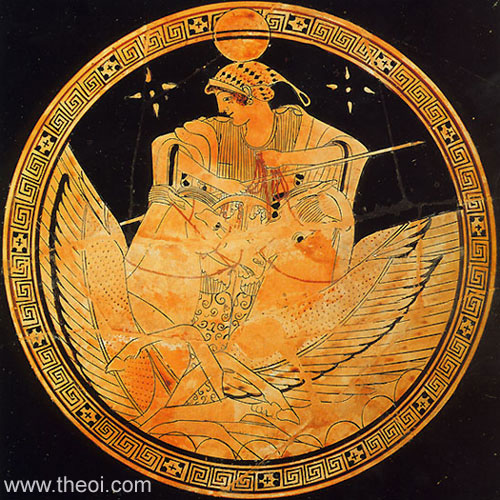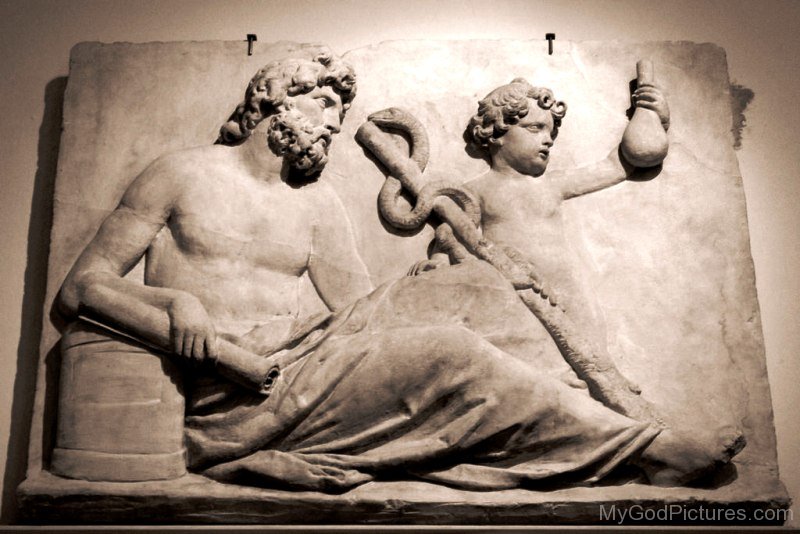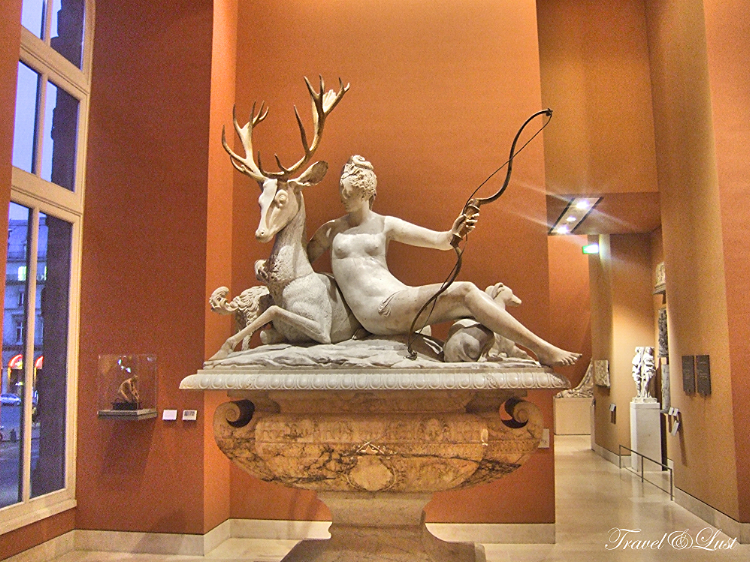The Dionysia ta en Astei (Διονύσια τὰ ἐν Ἄστει), Dionysia ta Megala (Διονύσια τὰ Μεγάλα), Great(er) Dionysia, or City Dionysia, was and is a true theatric festival of Dionysos. The City Dionysia is held on the 10th to 17th days of Elaphebolion and Elaion will host an eight day festival for it, from 28 - 4 April, at the usual 10 am EDT.
The City Dionysia is thought to have been founded, or at least revived, by the tyrant Pisistratus (around 530 BC), and was held in Athens, when the city was once again full of visitors after the winter. The festival honors Dionysos Eleuthereus (Διονυσος Ελευθερευς), who was said to have been introduced into Athens from the village of Eleuterae (Ελευθέραι). The festival focuses on the performance of tragedies, but has included the performing of comedies since 487 BC. It was the second-most important festival after the
Panathenaia.
According to myth, the festival was established after Eleutherae, a border-town between Attica and Boeotia, chose to become part of Attica. The Eleuthereans had an established festival of Dionysos--which then became the rural Dionysia--and celebrated to occasion by bringing a statue of Dionysos to Athens. The Athenians, by then not big on the worship of Dionysos, initially rejected the statue, but Dionysos punished the Athenians with a plague affecting the male genitalia. The Athenians, rightfully spooked, accepted the statue and honor of Dionysos, and the plague was cured. These events were recalled each year by two processions, the first, carrying the statue of Dionysos from His temple outside of the city of Athens into the city, and the second where various groups proceeded through the city to the theater, arrayed in groups distinguishable by color or other articles of dress.
Dionysos was a
métoikos in a city of Athens, a resident alien, and on the first two days of the festival, the métoikoi of the city got to wear brightly colored festival clothes--mostly purple--and carried trays of offerings in the processions, something métoikoi never got to do otherwise. The Athenian citizens, on the other hand, wore their day-to-day clothes and carried wine and bread with them, or herded the bulls which would be sacrificed. At the end of the processions, the statue of Dionysos was placed in His temple in the theater district, and
sacrifices were made to Him. Flute players and poets held contests, and were eager to outdo each other. After all of this, the festival most likely became very Dionysian, indeed.
Singing and dancing had always been a big part of the City Dionysia, but after a while, the structure of the eight day festival became more apparent. Instead of random singing and dancing, from the third day onward, everyone flocked to the theaters to view the plays, whose names and creators had been announced the day prior. The next three days of the festival were devoted to the
tragic plays. The three chosen playwrights performed three tragedies and one
satyr play each, one set of plays per day. Famous playwrights include Aeschylus, Euripides, and Sophocles. They were judged by judges (agonothetai) chosen on the second day.
On the seventh day of the festival, five
comedies by famous playwrights like Philemon, Chionides, and Aristophanes were performed. Comedies were of secondary importance at the Dionysia--the
Lenaia was far more important for those--but winning the comedic prize at the Dionysia was still regarded a great honor. It seems that, from the fifth century BC onwards, plays could be recycled, and the audience seemed to have appreciated it. These plays were fan favorites, and were not rushed to completion.
Another procession and celebration was held on the final day and the winners of the competitions were declared. The winning playwrights won a wreath of ivy or a goat, and when old plays were performed, the producer was awarded the prize rather than the long-dead playwright.
For the city Dionysia, we will be reading 'The Bacchae', a play by Euripides. We did it last year as well and we wanted to keep it a tradition. The play premiered posthumously at the Theatre of Dionysus in 405 BC as part of a tetralogy that also included 'Iphigeneia at Aulis' and 'Alcmaeon in Corinth', and which Euripides' son or nephew probably directed. It won first prize in the City Dionysia festival competition.
The Dionysus in Euripides' tale is a young God, angry that his mortal family, the royal house of Cadmus, has denied him a place of honor as a deity. His mortal mother, Semele, was a mistress of Zeus; while pregnant she was killed, through trickery, by Hera, who was jealous of her husband's affair. When Semele died, her sisters said it was Zeus' will and accused her of lying; they also accused their father, Cadmus, of using Zeus as a cover-up. Most of Semele's family refuse to believe Dionysus is the son of Zeus, and the young God is spurned in his home. He has traveled throughout Asia and other foreign lands, gathering a cult of female worshipers (Maenads or Bacchantes).
At the play's start he has returned, disguised as a stranger, to take revenge on the house of Cadmus. He has also driven the women of Thebes, including his aunts, into an ecstatic frenzy, sending them dancing and hunting on Mount Cithaeron, much to the horror of their families. Complicating matters, his cousin, the young king Pentheus, has declared a ban on the worship of Dionysus throughout Thebes. The Bacchae is considered to be not only Euripides' greatest tragedy, but one of the greatest ever written, modern or ancient. You can find links to several versions of the play in the rituals document.
You can find the rituals for the event
here and join the community
here. The first and last days have larger rituals and we've made a small ritual for the days in-between. The idea is that you read part of the play every day and finish it on the day of the last ritual. We hope you will join us in honoring Dionysos in his many, many forms.













